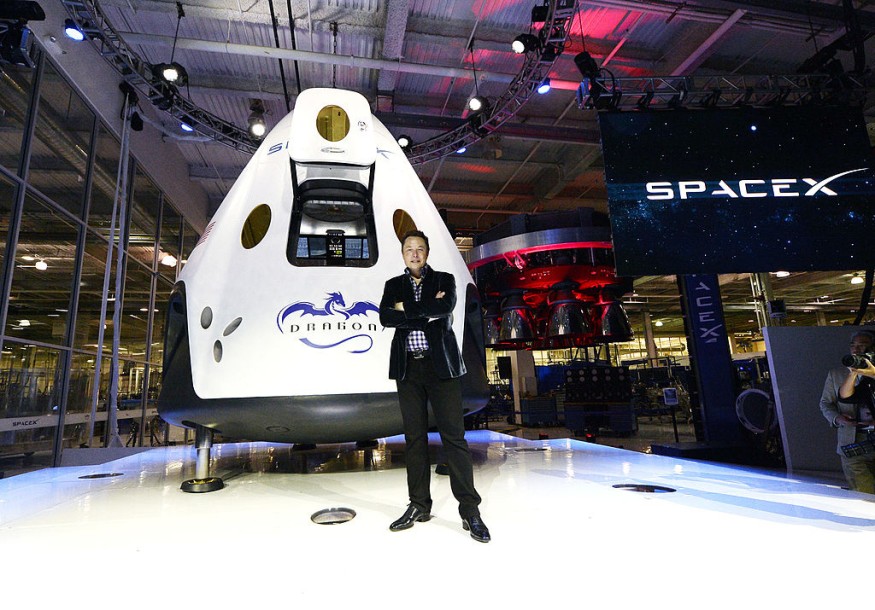Elon Musk has finally explained why SpaceX Starship SN 11 - also known as Serial No. 11 - caught fire last week.

HAWTHORNE-CA-MAY 29: SpaceX CEO Elon Musk unveils the company's new manned spacecraft, The Dragon V2, designed to carry astronauts into space during a news conference on May 29, 2014, in Hawthorne, California. The private spaceflight company has been flying unmanned capsules to the Space Station delivering cargo for the past two years. The Dragon V2 manned spacecraft will ferry up to seven astronauts to low-Earth orbit.
The new Starship concept took off from SpaceX's South Texas facilities near the Gulf Coast village of Boca Chica on a test flight on Mar. 30.
The 165-foot-tall (50-meter) craft soared to a maximum altitude of 6.2 miles (10 kilometers) as expected, and the 165-foot-tall (50-meter) craft checked a variety of boxes on the way down.
However, SN11 did not make a successful landing. According to SpaceX founder and CEO Elon Musk, the spaceship instead exploded in a massive fireball due to a plumbing problem.
Here's What Happened According to Elon Musk
SN11 "experienced a rapid unscheduled disassembly," or RUD, according to SpaceX. Elon Musk, the company's CEO, didn't announce what caused the explosion until this morning.
"Ascent phase, transition to horizontal & control during free fall were good. A (relatively) small CH4 leak led to fire on engine 2 & fried part of avionics, causing hard start attempting landing burn in CH4 turbopump. This is getting fixed 6 ways to Sunday," Musk said on Twitter.
Ascent phase, transition to horizontal & control during free fall were good.
— Elon Musk (@elonmusk) April 5, 2021
A (relatively) small CH4 leak led to fire on engine 2 & fried part of avionics, causing hard start attempting landing burn in CH4 turbopump.
This is getting fixed 6 ways to Sunday.
CH4 stands for methane, which is used to fuel SpaceX's next-generation Raptor engine. A "hard start" happens when there is too much fuel in the combustion chamber, causing the pressure to rise too high, which is bad for any engine.
SpaceX is designing the Starship, transporting people and cargo to the moon, Mars, and other far-flung locations. The Starship spacecraft and a massive first-stage booster known as Super Heavy are the two components of the transportation system, all of which would be completely reusable.
According to Musk, Raptors will power both the Starship and the Super Heavy - six for the final Starship and about 30 for the massive booster. Each of SN11's three predecessors, SN8, SN9, and SN10, flew three Raptors on 6-mile-high test flights in December, February, and early March, respectively.
The prototypes performed admirably during all four flights, with the prototypes performing admirably until the very end. In reality, SN10 landed in one piece before exploding eight minutes later.
Is Elon Musk's Team Doing Something to Prevent It?
SpaceX will keep attempting to perfect the landing. The next Starship project, codenamed SN15, has already been designed and is expected to take to the skies soon. Yes, you read that right. SpaceX is going from SN11 to SN15.
Observer said three Raptor engines, loaded with super cold methane and oxygen propellants, power all Starship designs. These engines are in charge of propelling the rocket to a height of 10 kilometers in the atmosphere.
If the rocket reaches the target altitude, it is programmed to shut down each of the engines in turn, pitch to a horizontal position, and begin a controlled descent back to the earth. In the final stage of decline, the engines are expected to re-ignite to flip the rocket 90 degrees for a vertical landing.
RELATED ARTICLE : Why Does Elon Musk's SpaceX Starship Keep on Exploding?
Check out more news and information on SpaceX on Science Times.
© 2026 ScienceTimes.com All rights reserved. Do not reproduce without permission. The window to the world of Science Times.











